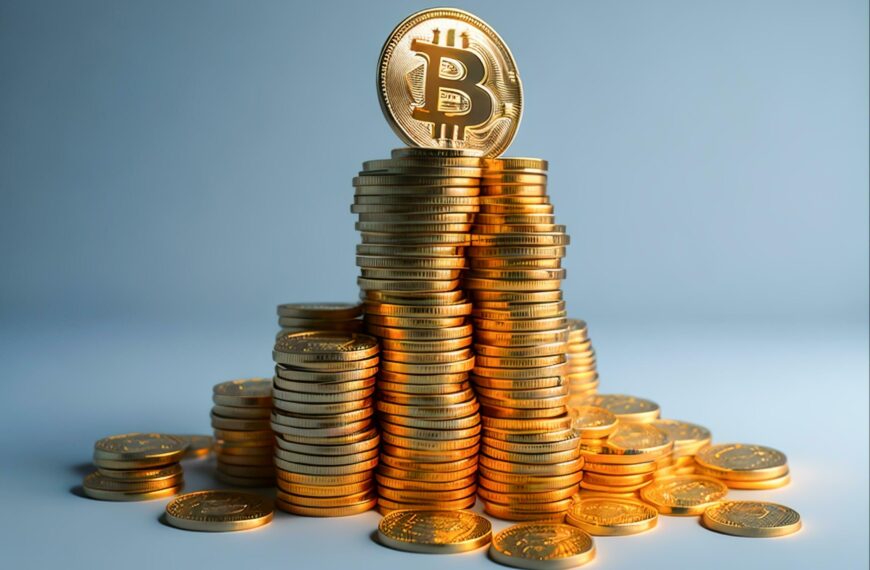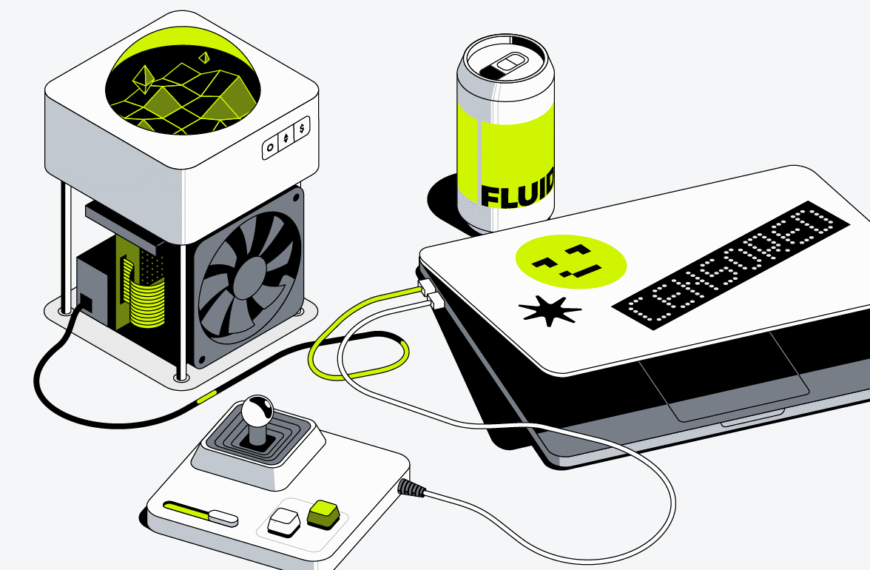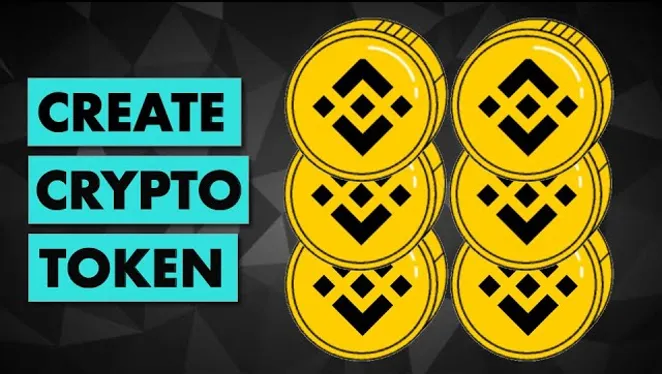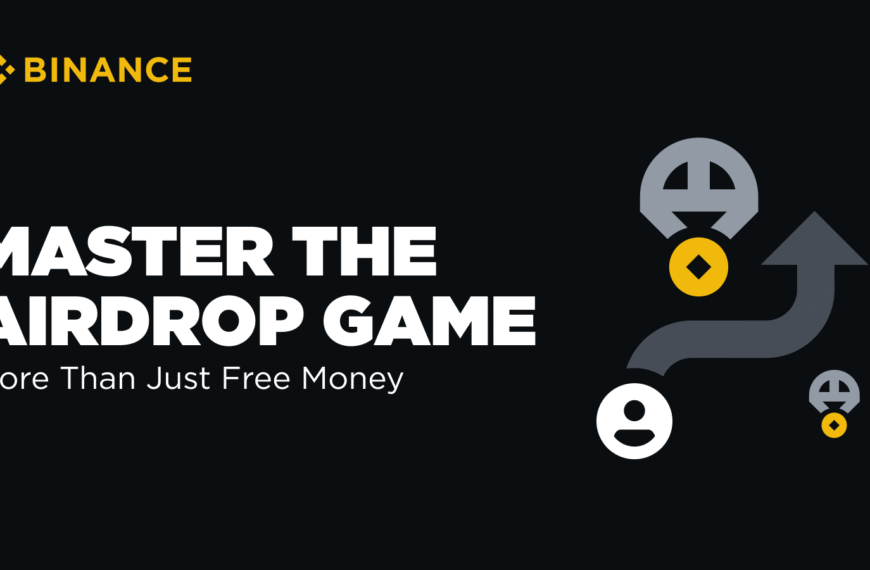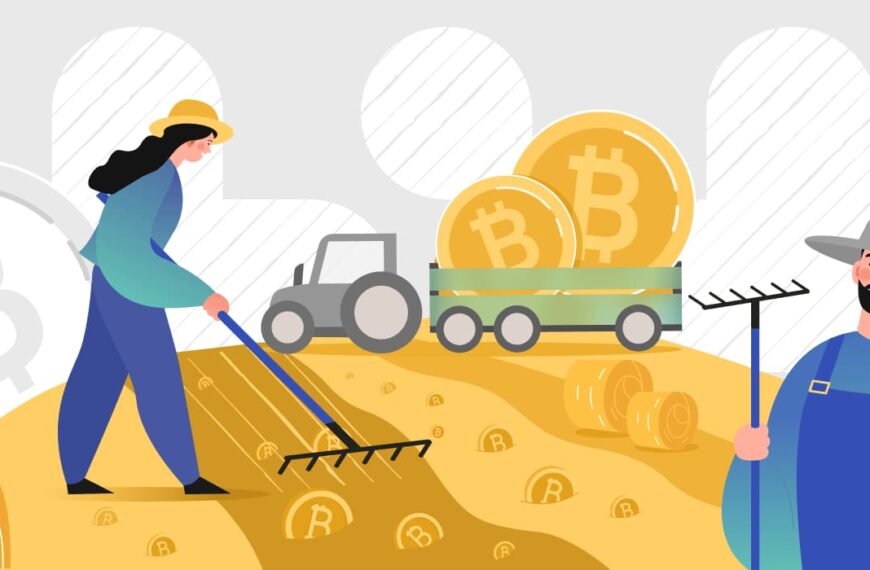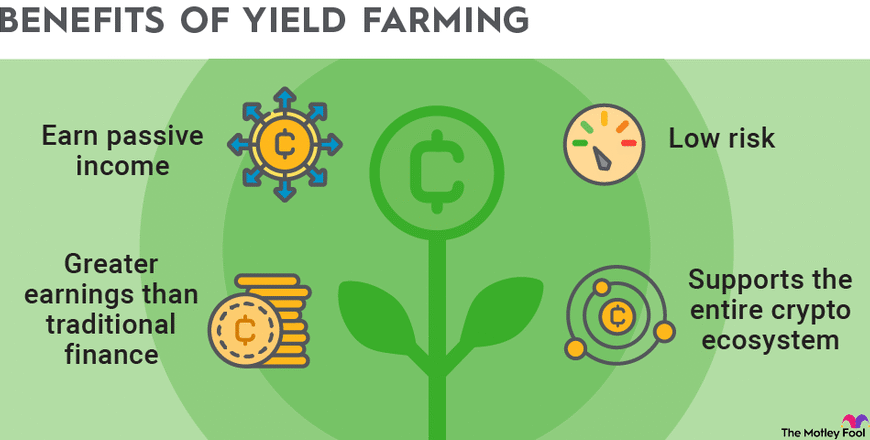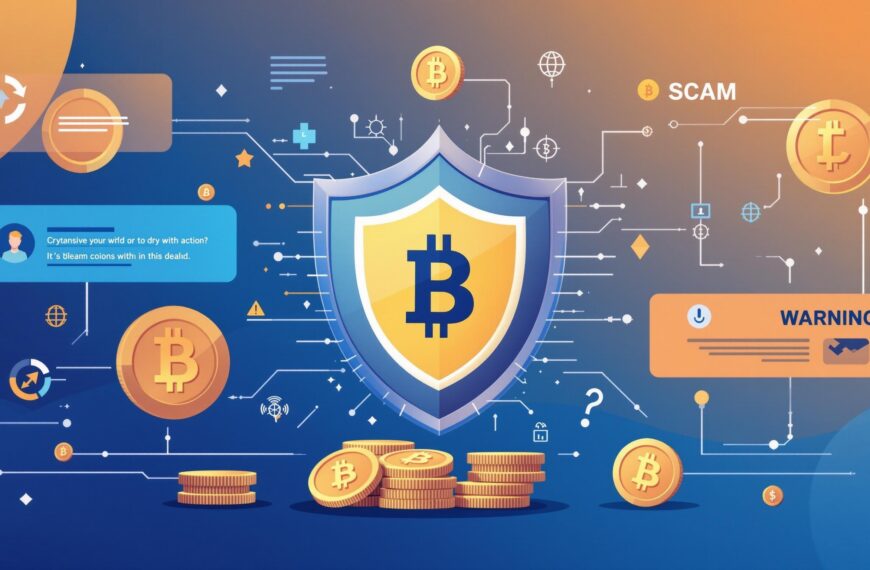Hey everyone, and welcome! 👋 If you’re tuning in, chances are you’re stepping into the exciting world of cryptocurrencies 🚀. That’s fantastic! 🎉 But before you dive into buying and trading, there’s one absolutely crucial thing you need to get your head around: crypto wallets 👛.
Think of a crypto wallet as your digital bank account 🏦, but instead of holding traditional money 💵, it holds the keys 🔑 that allow you to access and manage your cryptocurrencies like Bitcoin ₿, Ethereum Ξ, and many others. It doesn’t actually store the coins themselves — those live on the blockchain 🔗. Instead, your wallet holds your private keys 🤫, which are like secret codes that prove ownership of your crypto and authorize transactions.
Choosing the right crypto wallet can feel a tad overwhelming at first 🤔. There are different types, each with its own set of features and security levels. But don’t sweat it! In this guide, we’ll break down the main types of wallets in plain and simple English 🗣️, and I’ll give you some solid pointers on how to pick the one that fits you best 👍. So, grab your favorite beverage ☕, get comfy, and let’s lay a strong foundation for your crypto journey! 🌱
- 🤔 Why Bother with a Crypto Wallet Anyway?
- ➡️ The Two Core Categories: Custodial vs. Non-Custodial Wallets
- 🏦 1. Custodial Wallets: They Hold the Keys for You
- 🔑 2. Non-Custodial Wallets: You’re the Key Master
- 🔥 vs. 🧊 Diving Deeper: Hot vs. Cold Wallets
- 🔥 1. Hot Wallets: Always Online 🌐
- 🧊 2. Cold Wallets: Offline Fortress 🛡️
- 🤔 How to Pick the Perfect Crypto Wallet for You
- 🚀 Connect With Me

🤔 Why Bother with a Crypto Wallet Anyway?
Now, you might be scratching your head, thinking, “If my crypto isn’t in the wallet, then what’s the big deal?” Excellent question! 👍 Imagine owning a house 🏠. The deed to your house isn’t the house itself, but it proves you own it and allows you to sell or do other things with it. Your crypto wallet and its private keys work in a similar fashion.
- 🔑 Access Your Funds: Your private keys are essential to access and spend your cryptocurrency. Without them, your crypto is essentially locked away 🔒.
- ✍️ Authorize Transactions: When you want to send crypto to someone, your wallet uses your private key to digitally sign the transaction, proving it’s you giving the go-ahead.
- 📬 Receive Crypto: Your wallet also generates a public key (derived from your private key) — think of this as your bank account number 🔢. You can share this public key so others can send you crypto.
So, a crypto wallet isn’t just a place to see your balance 👀; it’s the tool that puts you in control of your digital assets 💪.
➡️ The Two Core Categories: Custodial vs. Non-Custodial Wallets
The most fundamental distinction to grasp is the difference between custodial and non-custodial wallets. It all boils down to who holds your private keys.
🏦 1. Custodial Wallets: They Hold the Keys for You
Think of a custodial wallet like keeping your money in a traditional bank 🏦. The bank holds your funds and takes care of the security. In the crypto realm, these are typically the wallets provided by cryptocurrency exchanges like Binance 🪙, Coinbase 🟦, or Kraken 🐙.
✅ Perks of Custodial Wallets:
- User-Friendly 😊: They’re generally very easy to navigate, especially for newcomers. The interface often feels familiar and straightforward.
- Convenience 🛒: Buying, selling, and trading crypto is usually integrated right within the exchange platform.
- Password Recovery ⚙️: If you happen to forget your password, there’s usually a recovery process to regain access to your account, much like a bank.
❌ Downsides of Custodial Wallets:
- Lack of Full Control 🔓: You don’t have direct ownership of your private keys. The exchange holds them on your behalf. This means if the exchange gets hacked hackers 🚨 or goes belly up 📉, your funds could be at risk. The golden rule here is: “Not your keys, not your coins.” 🔑➡️🚫💰
- Potential Censorship 🚫: In some rare instances, exchanges might freeze your account or prevent transactions based on their policies or regulations.
👍 When are Custodial Wallets a Good Fit?
- Beginners 🌱: They often provide the smoothest entry point for those new to the crypto space.
- Active Trading 📈: If you plan on frequent trading on a specific exchange, keeping your funds there can be quite convenient.
- Small Amounts 🤏: For smaller amounts of crypto that you’re actively using for trading, the convenience might outweigh the security concerns for some.
⚙️ Setting Up a Custodial Wallet:
Setting up a custodial wallet is usually a breeze:
- Choose a reputable cryptocurrency exchange 👍. Do your homework and select a well-known and secure platform.
- Sign up for an account 📝. You’ll typically need to provide some personal information and go through a verification process (KYC — Know Your Customer).
- Enable Two-Factor Authentication (2FA) 🔐. This adds an extra layer of security to your account, requiring a second code (usually from an app on your phone 📱) in addition to your password. This is absolutely crucial! 🚨
- Once your account is set up and verified ✅, the exchange will automatically provide you with wallet addresses for different cryptocurrencies. You can usually find these in a “Wallet” 👛 or “Funds” section of the platform.
(Image Suggestion: Screenshots of a popular crypto exchange’s sign-up and wallet interface, with arrows pointing to key areas like “Wallet” 👛 and 2FA settings 🔐.)
🔑 2. Non-Custodial Wallets: You’re the Key Master
With a non-custodial wallet, you are the sole owner and controller of your private keys 🔑. This grants you complete autonomy over your cryptocurrency. However, this also means you bear the full responsibility for security.
✅ Advantages of Non-Custodial Wallets:
- Full Control 💪: You have complete ownership of your private keys and, therefore, your crypto.
- Enhanced Security 🛡️: As long as you keep your private keys safe 🔒, your funds are generally more secure from exchange hacks hackers 🚨.
- Greater Privacy 🕵️♂️: Non-custodial wallets often require less personal information.
- Access to DeFi and Web3 🌐: Many decentralized applications (dApps) and Web3 platforms require you to connect with a non-custodial wallet.
❌ Disadvantages of Non-Custodial Wallets:
- Security Responsibility 🚨: If you lose your private keys or your seed phrase (a backup recovery phrase 📜), you will permanently lose access to your crypto 💀. There’s usually no “forgot password” option.
- Potentially Less User-Friendly 🤔: Some non-custodial wallets can be a bit more technical for beginners.
- Recovery Can Be Tough (or Impossible) 🤕: If you misplace your seed phrase, recovery is often impossible.
👍 When are Non-Custodial Wallets the Right Choice?
- Long-Term Holding (Hodling ⏳): If you’re planning to hold your crypto for the long haul, a non-custodial wallet offers superior security.
- Larger Crypto Holdings 💰💰: For significant amounts of crypto, the added security of a non-custodial wallet is highly recommended.
- Interacting with DeFi and Web3 🌐: These wallets are essential for participating in decentralized finance and the broader Web3 ecosystem.
- Prioritizing Security and Control 🛡️🔑: If you value being in complete control of your assets and are comfortable with the responsibility, a non-custodial wallet is for you.
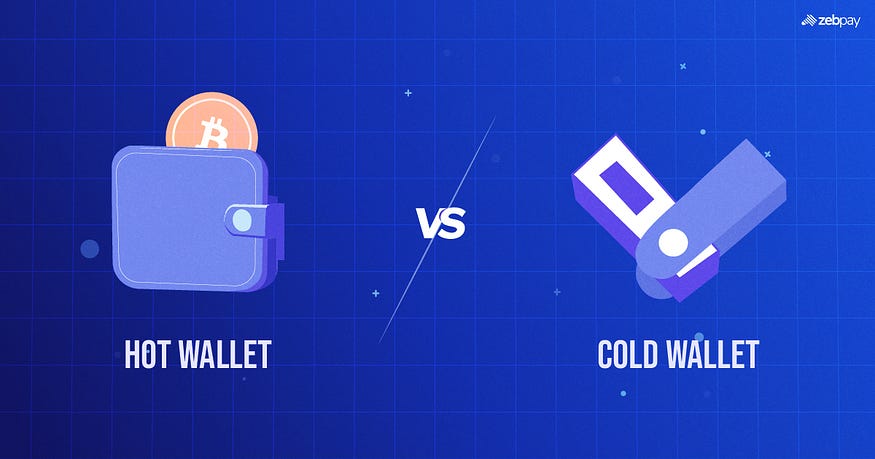
🔥 vs. 🧊 Diving Deeper: Hot vs. Cold Wallets
Within both custodial and non-custodial categories, wallets can also be classified as hot 🔥 or cold 🧊, based on their internet connectivity.
🔥 1. Hot Wallets: Always Online 🌐
Hot wallets are digital wallets that are connected to the internet 🌐. This makes them convenient for frequent transactions but also potentially more vulnerable to online attacks cyber threats 🚨.
Types of Hot Wallets:
- Web Wallets 💻: These are accessed through a web browser. Custodial exchange wallets fall into this category, but there are also non-custodial web wallets.
- Setup: Usually involves creating an account on the website. For non-custodial ones, you’ll be given a seed phrase 📜 to store securely.
- Security: Security heavily relies on the website’s security measures. With non-custodial web wallets, the responsibility of seed phrase security rests with you.
- Desktop Wallets 🖥️: Software that you install on your computer. They offer more security than web wallets (if your computer is secure 🛡️) but are still connected to the internet 🌐.
- Setup: Involves downloading and installing the software. You’ll then create a new wallet and be given a seed phrase 📜.
- Security: Depends on your computer’s security. Malware 👾 could potentially access your wallet.
- Mobile Wallets 📱: Apps on your smartphone. They’re super convenient for everyday transactions, like paying for things with crypto where accepted 🛍️.
- Setup: Downloading the app and creating a new wallet. You’ll receive a seed phrase 📜.
- Security: Your phone’s security is crucial. Losing your phone 📱 or having it compromised could lead to a loss of funds 💀.
🔒 Security Tips for Hot Wallets:
- Strong Passwords 💪: Use unique and strong passwords for all your accounts.
- Two-Factor Authentication (2FA) 🔐: Enable 2FA wherever possible, especially on exchanges.
- Beware of Phishing 🎣: Be extremely cautious of unsolicited emails 📧, messages 💬, and websites 🌐 trying to trick you into revealing your login details or seed phrase 📜.
- Keep Your Software Updated 🔄: Regularly update your operating system, browser, and wallet software to patch any security vulnerabilities.
- Only Keep Necessary Funds 🤏: For non-custodial hot wallets, consider keeping only the amount of crypto you need for regular transactions. Store larger amounts in a cold wallet 🧊.
🧊 2. Cold Wallets: Offline Fortress 🛡️
Cold wallets are not connected to the internet 🌐, significantly reducing the risk of online attacks cyber threats 🚨. They’re generally considered the most secure way to store larger amounts of cryptocurrency for the long term ⏳.
Types of Cold Wallets:
- Hardware Wallets 💾: These are physical devices specifically designed to store your private keys offline 🚫🌐. To make a transaction, you connect the device to your computer or phone 📱, but the private keys never leave the device. You confirm transactions directly on the device itself. Popular brands include Ledger and Trezor.
- Setup: Involves initializing the device and carefully writing down the seed phrase 📜 it generates. This seed phrase is your ultimate backup and must be kept extremely safe and offline 🔒🚫🌐.
- Security: Highly secure as private keys are stored offline 🚫🌐. Transactions require physical confirmation on the device ✅.
- Paper Wallets 📄: Less common now, these involve printing out your public and private keys (often as QR codes ⬛⬜) on a piece of paper 📄.
- Setup: Generated using online tools (use reputable, open-source ones with caution and ideally offline 🚫🌐). You then print them out.
- Security: Secure if stored correctly and never exposed online 🚫🌐. However, they’re inconvenient for frequent transactions and the paper can be easily damaged or lost 💀📄.
- Seed Phrase Storage 🔒: While not a wallet type itself, securely storing your seed phrase 📜 offline (e.g., engraved on metal 🔩, stored in separate secure locations 🗺️🔒) is a critical aspect of cold storage when using hardware or some software wallets.
🔒 Security Best Practices for Cold Wallets:
- Guard Your Seed Phrase 📜: This is the most critical security measure 🚨. Never store it digitally 🚫💾, never share it with anyone 🤫🚫🗣️, and keep it in a secure, private location (or multiple locations 🗺️🔒). Some people even use metal storage solutions for added protection against fire 🔥 and water 💧 damage.
- Buy Directly from Reputable Sources ✅: Purchase hardware wallets directly from the manufacturer to avoid tampered devices 👾.
- Beware of Fake Devices and Software ⚠️: Only use official software and be wary of scams involving fake hardware wallets or recovery services 🚨.
- Understand Transaction Processes 🤔: Familiarize yourself with how to securely connect your hardware wallet and verify transactions ✅.
(Image Suggestion: Photos of a hardware wallet device 💾 and an example of a seed phrase 📜 written down on paper 📄 or engraved on metal 🔩.)
🤔 How to Pick the Perfect Crypto Wallet for You
Choosing the right crypto wallet hinges on several factors related to your individual needs and comfort level. Here’s a step-by-step guide to help you make the call:
1. Assess Your Experience Level 🎓:
- Beginner 🌱: Custodial wallets on reputable exchanges often provide the easiest entry point due to their user-friendly interface 😊 and integrated trading features 📈📉. As you gain more confidence, you can explore non-custodial options 🔑.
2. Consider Your Crypto Holdings (Current and Future) 💰:
- Small Amounts (for trading or everyday use) 🤏: A hot wallet 🔥 (either a custodial exchange wallet or a non-custodial mobile wallet 📱) might offer sufficient convenience 🛒.
- Larger Amounts (for long-term holding) 💰💰: A cold wallet 🧊 (specifically a hardware wallet 💾) is highly recommended for optimal security 🛡️. You might even consider a combination — a hot wallet 🔥 for smaller, active amounts and a cold wallet 🧊 for your main stash.
3. Think About Your Transaction Frequency 🔄:
- Frequent Transactions 🔄: Hot wallets 🔥 (web 💻, desktop 🖥️, or mobile 📱) offer greater convenience for sending and receiving crypto regularly.
- Infrequent Transactions (mostly holding ⏳): Cold wallets 🧊 are well-suited as they prioritize security 🛡️ over ease of frequent use.
4. What Crypto Activities Do You Plan to Engage In? 🌐:
- Just Buying and Holding ⏳: A simple custodial wallet 🏦 might suffice initially, but a non-custodial cold wallet 🧊 is a safer bet for long-term security 🛡️.
- Trading on Exchanges 📈📉: Custodial wallets on the exchanges you actively use offer the most seamless experience.
- DeFi and Web3 🌐: Non-custodial wallets (like MetaMask 🦊, Trust Wallet 🛡️) are essential for interacting with decentralized applications.
5. How Important are Security and Control to You? 🛡️🔑:
- Comfortable with Someone Else Holding Your Keys (for now) 🏦: A custodial wallet offers ease of use 😊 but less direct control 🔓 and potentially higher vulnerability to exchange hacks साइबर 🚨.
- Value Full Control and Prioritize Security 🛡️🔑: A non-custodial wallet 🔑, particularly a cold wallet 🧊, is the way to go 👍. Be prepared for the added responsibility of managing your own security 🚨.
6. What’s Your Budget? 💸:
- Custodial 🏦, Web 💻, Desktop 🖥️, and Mobile Wallets 📱: These are generally free to set up (though exchanges will charge trading fees 💰).
- Hardware Wallets 💾: These involve a one-time purchase of the device, with prices ranging from around $50 to $200 or more.
7. Do Your Homework on Wallet Providers 🧐:
- Reputation 👍: Opt for well-established and reputable providers with a strong security track record 🛡️✅.
- User Reviews ⭐⭐⭐⭐⭐: See what other users are saying about their experiences with the wallet.
- Security Features 🔒: Check the security measures implemented by the wallet (e.g., encryption 🔒, 2FA 🔐, multi-signature support ).
- Supported Cryptocurrencies 🪙: Ensure the wallet supports the specific cryptocurrencies you intend to hold.
- User Interface 😊: Choose a wallet with an interface that you find intuitive and easy to navigate.
Example Scenarios:
- Newbie buying a small amount of Bitcoin 🌱₿: Starting with a custodial wallet on a reputable exchange with 2FA enabled 🔐 is a sensible first step. They can later explore a non-custodial mobile wallet 📱🔑.
- Long-term investor with a significant crypto portfolio ⏳💰💰: A hardware wallet 💾 is highly recommended for maximum security 🛡️.
- Active trader dealing with various cryptocurrencies 📈📉🪙: Keeping funds on the exchanges they actively trade on (with robust security measures 🛡️🔐) for trading convenience 🛒, while storing larger amounts in a non-custodial wallet 🔑, is a common strategy.
- User keen on exploring DeFi 🌐🦊🛡️: A non-custodial browser extension or mobile wallet like MetaMask 🦊 or Trust Wallet 🛡️ is essential.
What is the difference between custodial and non-custodial wallets?
Custodial wallets are managed by third parties like exchanges, where they hold your private keys. Non-custodial wallets give you full control over your keys and funds, offering greater independence but more responsibility.
Which wallet is best for beginners?
For new users, custodial wallets like Binance or Coinbase are easier to use and offer built-in support, making them ideal to start with. As you gain confidence, you can shift to non-custodial wallets like Trust Wallet or MetaMask.
Are hardware wallets safer than software wallets?
Yes. Hardware wallets like Ledger or Trezor store your private keys offline, making them highly secure against hacks — ideal for long-term holding.
Do I need a wallet to buy crypto on exchanges like Binance?
Not immediately. Exchanges provide a built-in custodial wallet. But for long-term storage or higher security, it’s recommended to transfer your crypto to a personal wallet.
🚀 Connect With Me
Enjoyed this guide? That’s just the beginning! I regularly share step-by-step tutorials, crypto alpha, and Web3 secrets you won’t find anywhere else.
Let’s stay connected and grow together:
🐦 Twitter: @cryptoviewlive — Daily crypto insights, threads, and real-time updates
💬 Telegram: t.me/cryptoviewlive — Direct chats, signals, and a growing crypto community
Got questions or stuck somewhere?
Drop them in the comments — I read and reply to everyone!
Let’s keep shipping, building, and winning in Web3 💪🚀
Disclaimer:
Please note that I am a human and human can make mistakes and this information is for educational purposes only. Nothing in this article should be considered financial or investment advice. Cryptocurrencies are volatile and involve substantial risk of loss. Always do your own research before making any investment decisions. Consult with a qualified financial advisor for personalized guidance.
Please note:–
CryptoView.live may contain links to third-party websites or external resources purely for informational purposes. We do not control or endorse the content, accuracy, or offerings of any third-party site linked within our platform. Visitors are strongly encouraged to conduct their own research before engaging with any services or content mentioned. The views expressed on CryptoView.live do not constitute financial advice and reflect the opinions of the authors, not necessarily those of the platform itself.
📢 New on CryptoView: Want to earn free crypto just by watching videos?
Check our latest guide on Binance Learn & Earn → Read now
